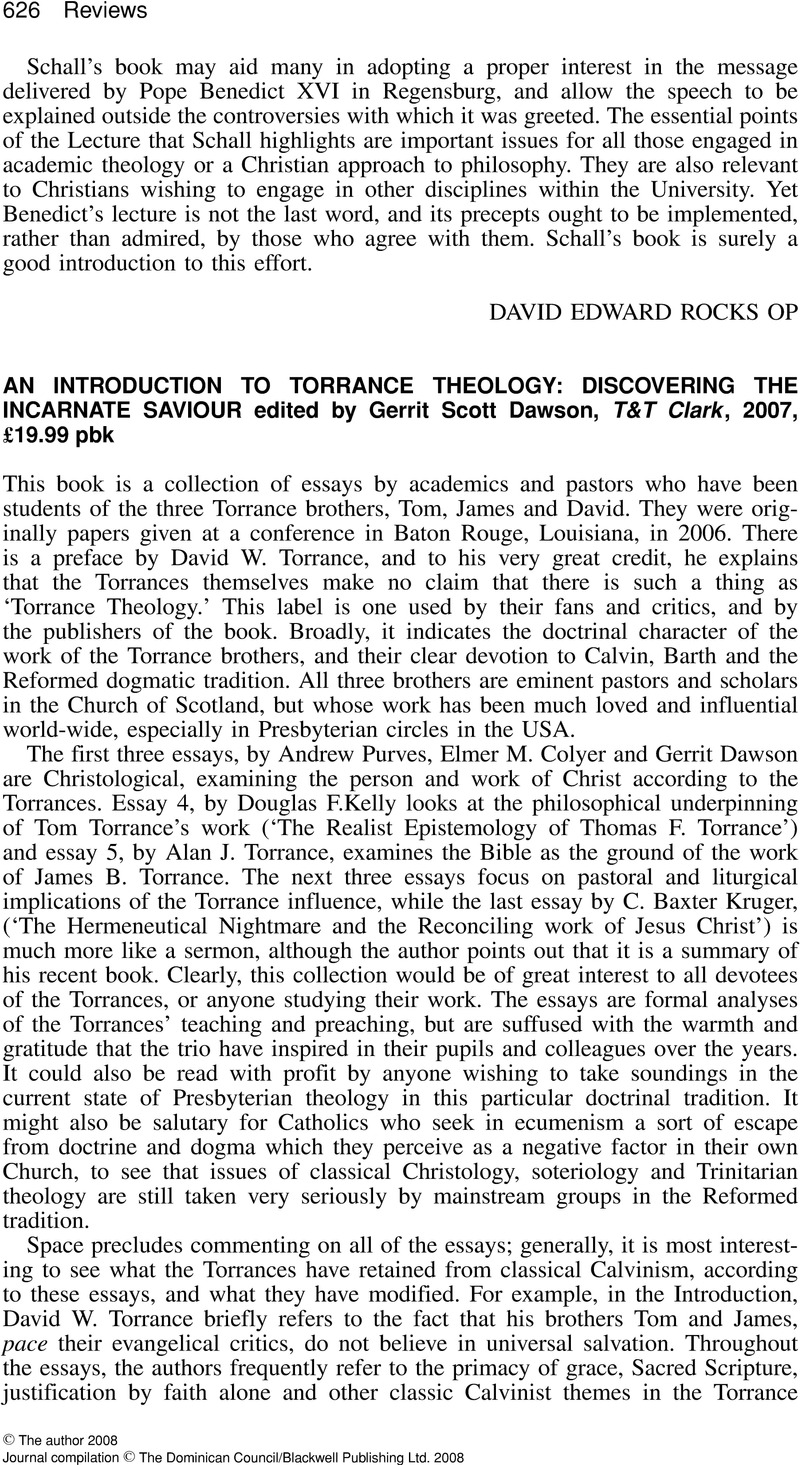No CrossRef data available.
Article contents
An Introduction to Torrance Theology: Discovering the Incarnate Saviour edited by Gerrit Scott Dawson, T&T Clark, 2007, £19.99 pbk
Review products
An Introduction to Torrance Theology: Discovering the Incarnate Saviour edited by Gerrit Scott Dawson, T&T Clark, 2007, £19.99 pbk
Published online by Cambridge University Press: 01 January 2024
Abstract
An abstract is not available for this content so a preview has been provided. Please use the Get access link above for information on how to access this content.

Information
- Type
- Reviews
- Information
- Copyright
- Copyright © The author 2008. Journal compilation © The Dominican Council/Blackwell Publishing Ltd. 2008

